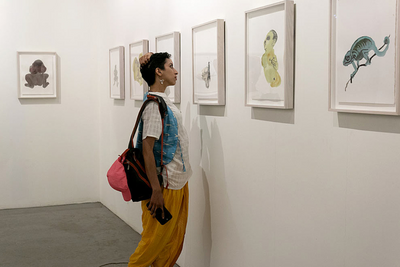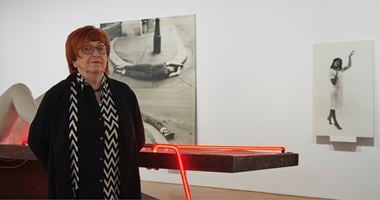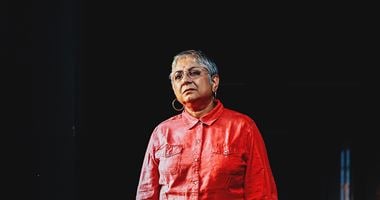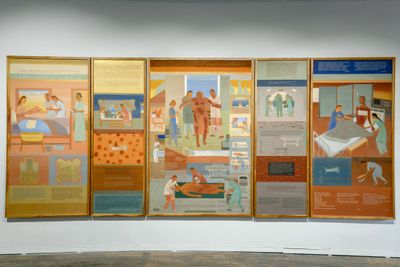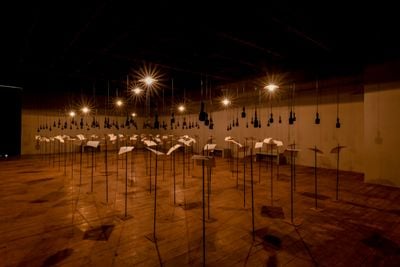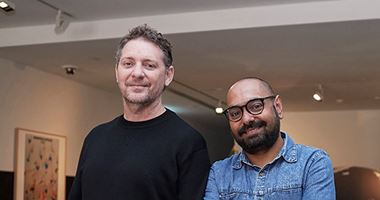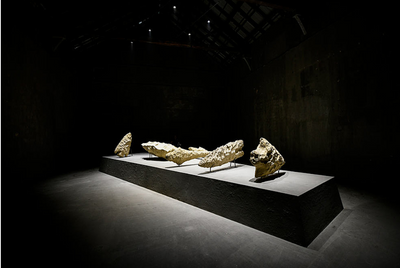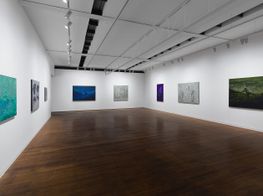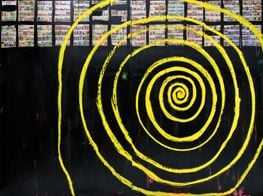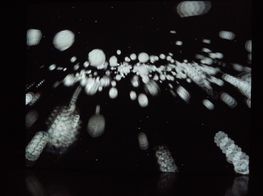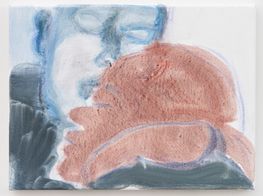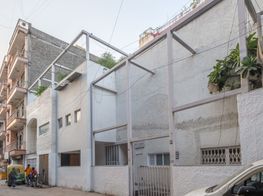4th Kochi-Muziris Biennale: Possibilities for a Non-Alienated Life
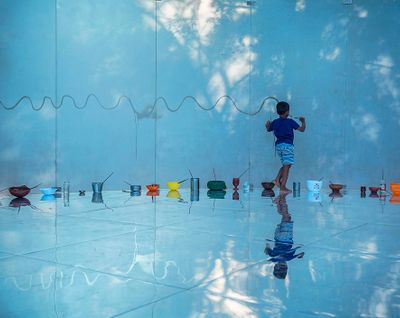
Song Dong, Writing Diary with Water (2018). Exhibition view: Possibilities for a Non-Alienated Life, Kochi-Muziris Biennale, Kochi (12 December 2018–29 March 2019). Courtesy Kochi Biennale Foundation.
Curated by Anita Dube, the 4th Kochi-Muziris Biennale: Possibilities for a Non-Alienated Life (12 December 2018–29 March 2019) 'places access at its core', writes Natalie King.
'Poems are like sentences that have taken their clothes off.' Marlene Dumas' poetic and sensual refrain accompanies her figurative watercolours on view in Possibilities for a Non-Alienated Life, the fourth edition of the Kochi-Muziris Biennale (KMB) in the southern state of Kerala, India (12 December 2018–29 March 2019).
Dumas' new series 'Vocabulary' (2018) comprises 20 delicate paintings of interlocking figures and solitary creatures including a snake, a bird, a cricket, and a snail as well as various body parts devoid of backgrounds. Two faces merge in a passionate kiss with eyes closed and red lips fused against lurid yellow flesh. Dumas' series sets the scene for Anita Dube's riveting 108-day biennial, which pivots on a theme that is derived from Guy Debord's warnings of a world mediated primarily through images.
As part of her extensive curatorial research, Dube visited over 30 countries within one year, resulting in a distinctive purview for this biennial that looks mostly at the Global South, drawing in marginalised and segregated craft and folkloric practices in the process. Bapi Das, for example, is an auto-rickshaw driver in Kolkata by day, who hand-embroiders exquisite scenes from his daily vista with aspects of his yellow and green rickshaw depicted in these intricate renditions. These are accompanied by magnifying glasses so visitors can see the deftness of the handiwork.
During my January visit, an audience thronged to see the work of around 95 artists, collectives, and infra-projects—including Valie Export, The Otolith Group, Zanele Muholi, and Rehana Zeman—primarily occupying disused warehouse and heritage spaces steeped in the patina of history. A former Portuguese colony, ten venues in total host the show, spread across Fort Kochi and Mattancherry, as well as Durbar Hall and downtown Ernakulam, including Anand Warehouse, Cabral Yard, and Kashi Art Cafe. A maritime place of arrival and departure, many of these venues are located near Kochi's waterways and rivers that run out towards the Arabian Sea.
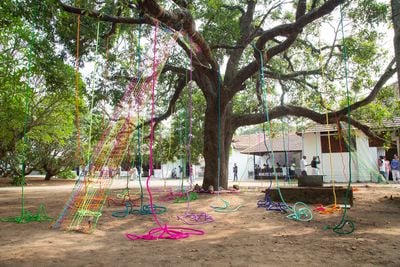
Dube, who is based in New Delhi, co-founded the experimental space Khoj International Artists' Association in 1997 and currently, she is exhibiting work in Connecting Threads: Textiles in Contemporary Practice at the Dr. Bhau Daji Lad City Museum in Mumbai (2 December 2018–17 February 2019). Importantly, she is the first woman to curate this artist-led biennial, and over half the participating artists are women, heralding an important paradigm shift. Clearly, there are feminist and activist inflections throughout the exhibition.
Strident posters by New York collective Guerrilla Girls are emblazoned across the interior and exterior walls of Aspinwall House and Cochin Club. The Advantages of Being a Woman Artist, a poster originally published in 1988, has been translated into Malayalam, listing 13 points as to why there is no advantage to being a woman artist in terms of success, prestige, and visibility. Also at Aspinwall House are photomontages showing images of war intervening in domestic scenes from the 'House Beautiful: Bringing the War Home' series (1967–72) by Martha Rosler, a formative figure of the feminist movement of the 1970s in New York. Tania Bruguera's contribution to the show is an enlarged open letter presented on a wall of Map Project Space, explaining her decision not to attend the biennial and remain in Cuba so as to continue the fight against the Cuban government's legalisation of cultural censorship: 'turning what was until now, subjective and debatable into crime'.
Other works articulating a feminist position include artist, activist, and academic Aqui Thami's Sister Library (2018), installed in the Pepper House library: hundreds of books and texts by women authors arranged on fluorescent pink shelving adjacent to a neon sign spelling out the title of the work, ranging from fiction, non-fiction and academic writing, to comics, zines, periodicals, community news and protest leaflets. Rina Banerjee's carnivorous, sexual, and sculptural flower, From the Oysters Shell it fell with a neck of dangling bells a flirtatious alligator who put upon us a bodily spell (2006), is made up of items such as metal bells and fuchsia pink feathers.
Nilima Sheikh's five-panel painting, Salam Chechi (2018), is an ode to Malayali nurses and is executed in a flat, dreamy palette that recalls Fra Angelico's Renaissance frescoes, with figures tending to patients in hospital beds and accompanied by annotations about exploitation, abuse, monitors, and catheters. The work is partly autobiographical: as a young girl Sheikh accompanied her doctor father to hospital, sketchbook in hand, observing female support and solidarity.
Song and voice are taken up by Shirin Neshat in the dual-screen black-and-white video installation Turbulent (1998), which contrasts the performance of a male singer, Shoja Azari singing a melodic song with lyrics from a 13th-century Sufi poem by Rumi, with that of renowned female vocalist Sussan Deyhim—the former standing in front of a crowd, the latter facing a room of empty seats. By juxtaposing male privilege as the dominant gender, Deyhim follows Ajari's ovation with a powerful and wordless lament full of guttural sound, vibrato, and emotion.
Dube frequently choreographs individual artists in a single room to allow for a depth of presentation. Installed in one dimly lit room at Aspinwall House is Shilpa Gupta's For, in your tongue, I cannot fit (2017–18), also on view in Brisbane at the 9th Asia Pacific Triennial of Contemporary Art (24 November 2018–28 April 2019). Furthering the use of language, song, and poetics, the installation comprises 100 hanging microphones delivering poetic verses in different languages, arranged with incantations from the accused and incarcerated, where words cause affliction and restriction.
There is broad emotional and material range, with moments of communion, joy, concern, and trepidation. Brook Andrew, who is curating the 2020 Biennale of Sydney, reflects on perilous histories in The Space Between (2018) at TKM Warehouse: an installation that mines archives of dispossession and colonisation with giant inflatable orbs inscribed with texts in Malayalam and Wiradjuri, and suspended banners with archival photographs.
Nearby, Jitish Kallat, who curated the 2014 edition of KMB, presents Untitled (Two Minutes to Midnight) (2018), a collection of sculptures derived from Paleolithic hand axes and stone tools that were the first human effort to alter the planet, placed on a plinth that derives its forms from the hands of the iconic Doomsday Clock, alluding to the many urgencies of the present day.
In her poetic and succinct curatorial statement, Dube yearns for 'a desire for liberation and comradeship ... Where pleasure and pedagogy could sit together and share a drink, and where we could dance and sing and celebrate and dream together.' Reflecting her inclusive curation, a Student Biennale, cinema programme, performances, seminars, and workshops have been organised to augment the exhibition. The bilingual guidebook and didactic panels are composed in English and Malayalam, with clever graphics that riff off the swirls of the Malayalam alphabet with its circular flourishes.
There is also a brilliant guiding roster, with 20 highly articulate and enthusiastic mediators with deep knowledge of each artwork and specially trained by the Kochi Biennale Foundation, provide free daily tours in English and Malayalam. The group undertook intensive training for over a month, equipping them with an engaging and invaluable rapprochement with the artworks rather than simply didactic instruction.
At the heart of this KMB is the Biennale Pavilion, designed by Anagram Architects, a hub and knowledge laboratory in the central courtyard of Cabral Yard: what Dube refers to as a place of 'listening to the stone and the flowers; to older women and wise men; to the queer community; to critical voices in the mainstream; to the whispers and warnings of nature.' On my final night, I was enthralled by a performance of Carnatic Kattaikuttu, a traditional form of theatre involving music and dance, which involved many artists, including TM Krishna and P Rajagopal.
The Biennale Pavilion encapsulates the ethos of Dube's exceptional exhibition, which places access at its core: an especially critical gesture given the devastating floods that ravaged Kerala prior to KMB's 2018 opening, the worst in a century. In response, Julie Gough collected detritus from the flood to form a mournful ensemble. Despite this backdrop of immense loss, a sense of resilience, camaraderie, and optimism pervades South Asia's pre-eminent biennial, referred to by its president, Bose Krishnamachari, as a way to recover 'dialogues around peaceful co-existence from dogmatic universalisms'. Dube has given ample space for such a recovery in an exhibition where, to borrow her words, 'All are welcome.'—[O]

